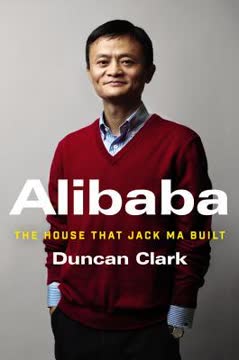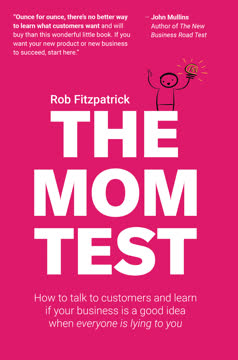重点摘要
1. 创业困境塑造初创企业的轨迹和结果
不幸但真实:如果创业是一场战斗,大多数伤亡来自友军火力或自我造成的伤害。
早期决策至关重要。 创始人从一开始就面临一系列关键选择,这些选择可能成就或毁掉他们的企业。这些选择包括是单独创业还是与联合创始人一起创业,如何构建创始团队,以及何时引入外部资源。每个决定都涉及权衡,可能产生长期影响。
预见挑战。 成功的企业家会提前考虑潜在的陷阱并相应地进行规划。这包括:
- 考虑关系选择对团队动态的影响
- 结构化股权协议以对齐激励并允许变更
- 仔细评估投资者的适配性,不仅仅是资本
平衡激情与规划。 虽然创业激情至关重要,但它可能导致过度自信和糟糕的决策。创始人应通过仔细分析和寻求外部观点来避免常见的陷阱。
2. 职业时机影响创业成功和准备
成为创始人没有完美的时机,我应该成为企业家吗?
评估准备情况。 在启动企业之前,潜在的创始人应评估他们的:
- 人力资本:与企业相关的技能、知识和经验
- 社会资本:关系网络和行业联系
- 财务资本:个人储蓄和自筹资金的能力
考虑人生阶段。 创办公司的决定受个人情况影响:
- 早期职业的创始人可能更灵活但经验较少
- 中期职业的创始人通常拥有宝贵的技能和网络,但面临更高的机会成本
- 晚期职业的创始人带来丰富的经验,但可能难以应对初创企业的需求
时机重要。 市场条件、技术趋势和个人准备情况都在决定启动时机中起作用。等待太久可能错失机会,而在准备不足的情况下过早行动则增加失败风险。
3. 创始团队面临关键的关系、角色和奖励决策
有更多关键决策——以及每个决策中的更多选项——比许多创始人意识到的要多。
团队组成至关重要。 创始人必须仔细考虑:
- 先前关系:朋友、家人、同事或陌生人
- 互补技能:平衡技术和业务专长
- 共同价值观和愿景:在目标和工作风格上的一致性
角色和职责。 明确的劳动分工和决策过程是必不可少的:
- 正式头衔:CEO、CTO等
- 职能职责:谁领导业务的哪些领域
- 决策权威:共识与层级
股权分配。 创始人如何分配所有权具有长期影响:
- 静态与动态分配:为变化的贡献建立灵活性
- 授予计划:激励长期承诺
- 考虑过去、现在和未来的贡献
4. 招聘选择显著影响初创企业的增长和文化
我们是聘请他作为经理还是作为向CEO汇报的副总裁?在公司的早期阶段,你没有能力给他们更多的薪水,但头衔很便宜,所以你用它来使套餐更具吸引力。
战略招聘。 早期员工塑造公司文化和能力:
- 通才与专家:平衡灵活性与专长
- 经验水平:权衡成本与技能和行业知识
- 文化契合度:在保持凝聚力的同时促进多样性
薪酬结构。 初创企业必须创造性地吸引人才:
- 股权与薪水的权衡
- 基于绩效的激励
- 非财务激励(使命、成长机会)
扩展挑战。 随着初创企业的成长,招聘需求会演变:
- 从通才过渡到职能专家
- 专业化人力资源实践和组织结构
- 管理新员工与创始团队成员的整合
5. 投资者选择影响资源获取和创始人控制
对初创企业来说,资源越关键,初创企业必须放弃的越多以吸引它。
融资选择。 企业家有各种资本来源,每种都有权衡:
- 自筹资金:保持控制但限制增长
- 朋友和家人:容易获取但可能关系紧张
- 天使投资人:行业专长但资本较少
- 风险投资:大量资源但失去控制
投资者适配。 除了资本,创始人还应考虑:
- 战略价值:行业联系和专长
- 一致性:对公司增长和退出策略的共同愿景
- 声誉:与企业家合作的记录
控制影响。 接受外部投资通常意味着:
- 董事会席位:改变决策动态
- 清算优先权:影响潜在回报
- 增长压力:可能与创始人偏好冲突
6. 创始人-CEO继任是初创企业的关键时刻
你可以更换CEO,但你不能更换创始人。
变更触发因素。 CEO过渡通常由以下原因引起:
- 公司增长超越创始人技能
- 投资者对经验丰富的领导的压力
- 创始人倦怠或寻求新挑战
管理过渡。 成功的继任需要:
- 与利益相关者的清晰沟通
- 定义创始团队成员的持续角色
- 仔细选择与公司需求一致的新领导
创始人的困境。 许多企业家在以下方面挣扎:
- 对他们的“孩子”的情感依恋
- 认识到自己的局限性
- 平衡个人目标与公司需求
7. 财富与控制的权衡定义了创业路径
在实现一个和另一个之间存在内在的紧张关系。
基本选择。 企业家必须决定优先考虑:
- 财富:最大化财务回报,通常通过放弃控制
- 控制:保持决策权,可能限制增长
决策影响。 这一核心动机影响整个创业旅程中的选择:
- 团队建设:单独创业与吸引顶尖人才
- 融资:自筹资金与接受外部投资
- 增长策略:缓慢稳健与快速扩展
混合方法。 一些创始人试图平衡这两个目标:
- 在早期阶段保持控制,然后引入外部资源
- 专注于竞争较少的利基市场
- 利用替代增长策略(如特许经营)
最后更新日期:
FAQ
What's The Founder's Dilemmas about?
- Focus on Founding Challenges: The Founder's Dilemmas by Noam Wasserman examines the internal challenges founders face, particularly "people problems" that can lead to startup failure.
- Founding Dilemmas Framework: It introduces a framework of "founding dilemmas," covering career decisions, team dynamics, and the balance between wealth and control.
- Real-World Case Studies: The book uses a dataset of nearly 10,000 founders and case studies, including entrepreneurs like Evan Williams, to illustrate startup complexities.
Why should I read The Founder's Dilemmas?
- Practical Insights for Founders: The book offers actionable insights and frameworks to help entrepreneurs navigate common startup pitfalls.
- Research-Backed Analysis: It combines rigorous research with real-world examples, making it a valuable resource for understanding startup dynamics.
- Avoiding Common Mistakes: By highlighting internal challenges, it aims to help founders make informed decisions for greater success.
What are the key takeaways of The Founder's Dilemmas?
- Team Dynamics Importance: Founders must carefully consider their founding teams, as relationships and roles significantly impact success.
- Wealth vs. Control Trade-offs: Founders face dilemmas between maximizing wealth and maintaining control, affecting long-term outcomes.
- Pre-Founding Considerations: Potential founders should evaluate career, personal, and market circumstances before starting a business.
What are the main dilemmas discussed in The Founder's Dilemmas?
- Career Dilemmas: Founders must decide when to launch their startup based on personal, career, and market factors.
- Founding Team Dilemmas: This includes decisions on solo versus team founding, relationship dynamics, role assignments, and equity splits.
- Hiring and Investor Dilemmas: Challenges include hiring the right team and attracting investors while balancing risks and rewards.
How does Noam Wasserman define "founding dilemmas"?
- Predictable Challenges: Founding dilemmas are common, predictable challenges that arise as startups grow, often leading to internal conflicts.
- Trade-offs: These dilemmas require founders to negotiate trade-offs, such as between wealth and control, with long-term implications.
- Focus on People Problems: Many startup failures stem from internal team issues rather than external market factors.
What is the "Three Rs" framework in The Founder's Dilemmas?
- Relationships, Roles, Rewards: The framework refers to critical areas founders must navigate: cofounder relationships, roles, and rewards (equity and compensation).
- Interconnectedness: Decisions in one area can impact others, making alignment across all three dimensions essential.
- Stability and Success: Proper alignment of the Three Rs can lead to greater team stability and increased chances of success.
How does The Founder's Dilemmas suggest managing team dynamics?
- Proactive Communication: Founders should establish open communication to address potential conflicts and ensure team members feel valued.
- Clear Role Definitions: Clearly defining roles and responsibilities can prevent overlap and reduce tensions within the team.
- Regular Check-ins: Regular discussions about team dynamics and contributions help maintain alignment and address emerging issues.
What are the risks of founding with friends or family according to The Founder's Dilemmas?
- High Emotional Stakes: Founding with friends or family can lead to emotional risks, as business conflicts may affect personal relationships.
- Avoiding Difficult Conversations: Founders may avoid critical discussions to protect personal relationships, leading to unresolved tensions.
- Statistical Instability: Teams with prior social relationships are less stable than those with professional relationships, increasing cofounder turnover.
How does The Founder's Dilemmas address equity splits?
- Equity Split Dynamics: Equity splits can lead to tension if not handled properly, with prior relationships impacting equitable splits.
- Equal vs. Unequal Splits: Teams often prefer equal splits to avoid conflict, but this can lead to dissatisfaction if contributions differ.
- Recommendations for Founders: Thoughtful negotiations considering past contributions and future expectations create a fair structure.
What strategies does The Founder's Dilemmas suggest for effective succession planning?
- Early Preparation: Founders should start thinking about succession early to mitigate resistance and ensure a smooth transition.
- Choosing the Right Successor: Selecting a successor with complementary skills and experience helps navigate growth challenges.
- Facilitating Transition: Clear roles and responsibilities during the transition reduce confusion and conflict, with the outgoing founder in a supportive role.
What role does social capital play in The Founder's Dilemmas?
- Definition of Social Capital: Social capital refers to networks and relationships that founders leverage for resources and support.
- Influence on Opportunities: Strong social capital can open doors to funding, partnerships, and talent acquisition.
- Building Social Capital: Founders are encouraged to cultivate networks and seek diverse connections to attract resources and support.
What are the best quotes from The Founder's Dilemmas and what do they mean?
- “The juice isn’t worth the squeeze.”: Reflects the idea that aggressive negotiations may not be worth the resulting tensions within the team.
- “You’re mixing friendship with business.”: Highlights risks of hiring friends, as personal relationships can complicate professional decisions.
- “Money buys time.”: Underscores the role of financial capital in allowing startups to experiment, pivot, and grow, emphasizing the need for adequate funding.
评论
《创始人的困境》因其基于数据的创业挑战洞察而备受赞誉。读者们欣赏沃瑟曼对创始人面临的关键决策的分析,包括联合创始人选择、股权分配和投资者关系。书中对财富与控制权权衡的关注引起了许多人的共鸣。尽管有些人认为内容过时或显而易见,但大多数人认为这是有志创业者必读的书籍。批评者指出其篇幅较长且学术风格明显,但也承认其在突出潜在陷阱方面的价值。总体而言,评论者推荐它作为一本全面指南,帮助创业者应对创业过程中的复杂问题。
Similar Books














